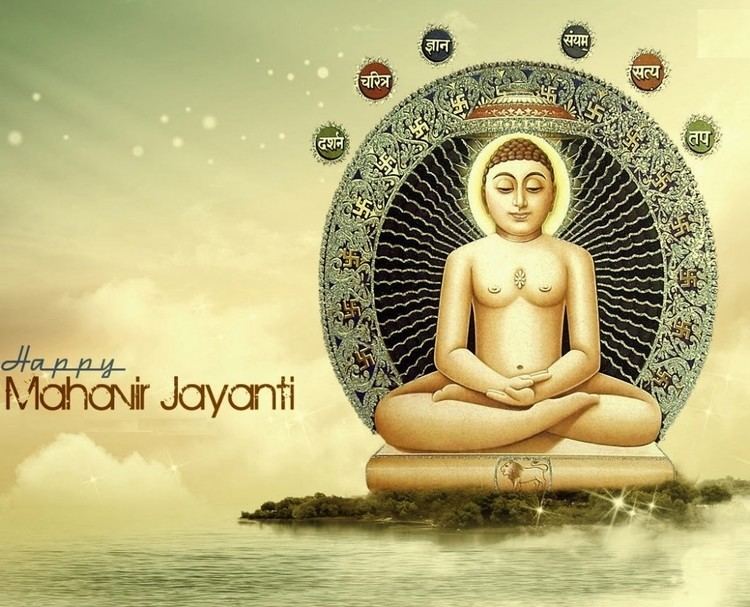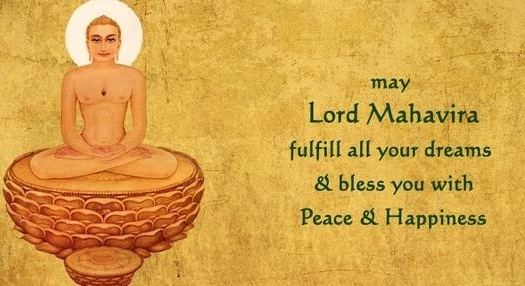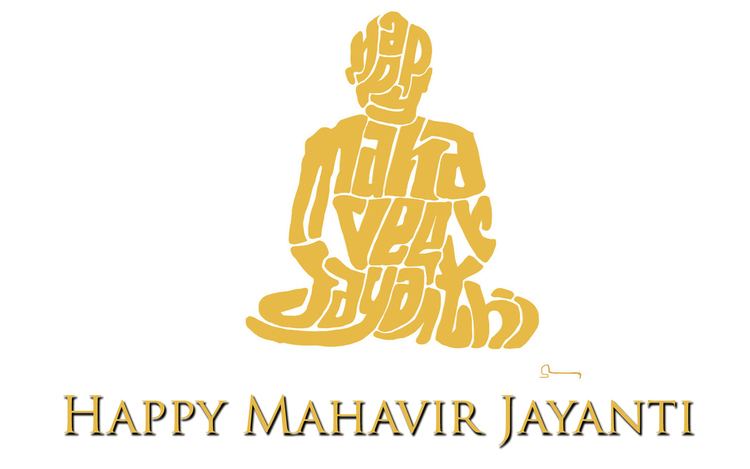Observed by Jains Frequency annual Featured in religions Jainism | 2018 date 29 March 2017 Date 9 April 2017 | |
 | ||
Significance Birth Anniversary of Mahavira Celebrations Going to the Jain Temple Observances Prayers, Religious Rituals Type of holiday Religious, National holiday Also called Birth Anniversary of Mahavira; Mahavir Janma Kalyanak (Translation) | ||
Mass procession marked the festival of mahavir jayanti
Mahavir Jayanti, also known as Mahavir Janma Kalyanak, is the most important religious festival for Jains. It celebrates the birth of Mahavira, twenty-fourth and the last Tirthankara (Teaching God) of the present time cycle. On the Gregorian calendar, the holiday occurs either in March or April.
Contents
- Mass procession marked the festival of mahavir jayanti
- Most sacred festival for jains mahavir jayanti
- Birth
- Birth legend
- Celebrations
- Ahimsa run and rallies
- Greetings
- References

Most sacred festival for jains mahavir jayanti
Birth

Most modern historians consider Vasokund as Mahavira's birthplace. According to Jain texts, Mahavira was born on the thirteenth day of the bright half of the moon in the month of Chaitra in the year 599 BCE (Chaitra Sud 13). Mahavira was born in a democratic kingdom (Ganarajya), Vajji, where the king was chosen by votes. Vaishali was its capital.

As a child, Mahavira was called with the name 'Vardhamana', which means "One who grows", because of the increased prosperity in the kingdom at the time of his birth. In Vasokund, Mahavira is much revered by the villagers. A place called Ahalya bhumi has not been ploughed for hundreds of years by the family that owns it, as it is considered to be the birthplace of Mahavira.
Birth legend

Mahavira was born into Ikshvaku dynasty as the son of King Siddhartha of Kundagrama and Queen Trishala. During her pregnancy, Trishala was believed to have had a number of auspicious dreams, all signifying the coming of a great soul. The exact number of dreams differs according to the school of Jainism; Svetambaras generally believe that the actual number is fourteen while Digambaras claim sixteen instead. Regardless, the astrologers who interpreted these dreams claimed that the child would become either a Chakravartin or a Tirthankara. It is said that when Queen Trishala gave birth to Mahavira, the god-king Indra bathed the newborn himself with celestial milk, a ritual essentially marking him as a Tirthankara.
Celebrations
The idol of Mahavira is carried out on a chariot, in a procession called rath yatra. On the way bhajans (religious rhymes) are recited. Local statues of Mahavira are given a ceremonial bath called the abhisheka. During the day, most members of the Jain community engage in some sort of charitable act. Many devotees visit temples dedicated to Mahavira to meditate and offer prayers. Lectures by monks and nuns are held in temples to preach the path of virtue as defined by Jainism. Donations are collected in order to promote charitable missions like saving cows from slaughter or helping to feed poor people. Ancient Jain temples across India typically see an extremely high volume of practitioners come to pay their respects and join in the celebrations.
Ahimsa run and rallies
Ahimsa runs and rallies preaching the Mahavira's message of Ahiṃsā are taken out on this day.
Greetings
Many political leaders and government officials extend their greetings on this occasion.
